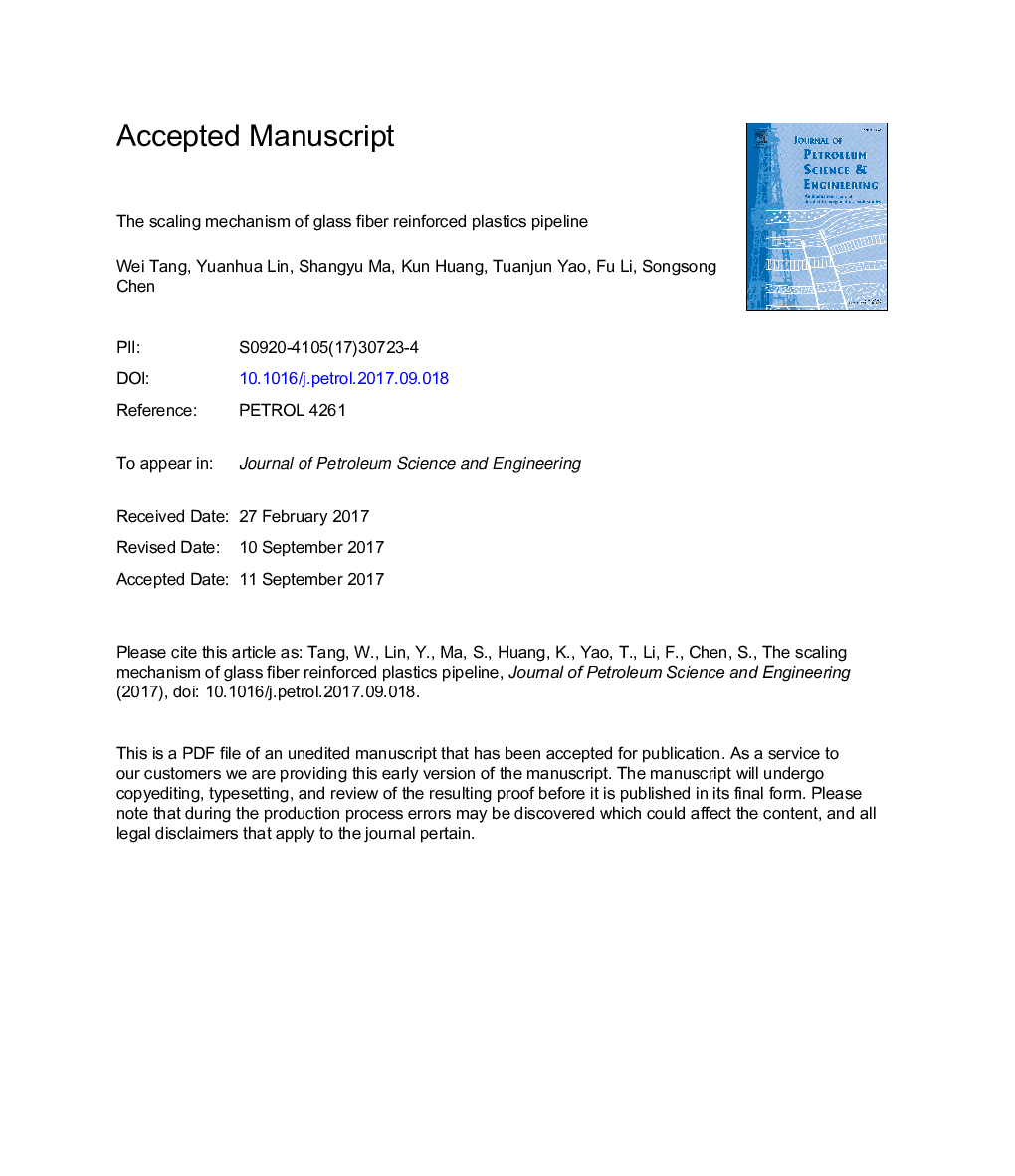| Article ID | Journal | Published Year | Pages | File Type |
|---|---|---|---|---|
| 5483883 | Journal of Petroleum Science and Engineering | 2017 | 28 Pages |
Abstract
The lack of scaling mechanism on glass fiber reinforced plastics (GFRP) pipeline in oilfield environment causes the common misunderstanding of scaling mechanism in oil and gas industry, which in turn results in inappropriate selection of pipeline and unreasonable operation parameters. In this paper, the scale experiments for different surface roughness of GFRP and 13Cr stainless steel were carried out to obtain the corresponding mass gain in real oilfield conditions. The laws of temperature, surface roughness, time, contact angle and surface free energy of pipeline on scaling mechanism were analyzed from the macroscopic and microscopic view. Water quality and scale analysis indicated that the oil field was prone to form calcium carbonate and a small amount of magnesium carbonate mixed scale. GFRP scale deposition experiments revealed that the fouling would increase as time going and temperature rising and there existed a critical temperature at which the scale reached the highest scaling rate. GFRP hydrolysis experiments showed that the slight hydrolysis of GFRP caused by ions erosion would increase as temperature rising and scale deposition process would be adequately affected under high temperature. The surface free energy of 13Cr and GFRP with different roughness would be calculated to study the effects of contact angle and surface free energy on scale deposition. The results indicated that the mass gain had no liner relation with the surface roughness but would increase with the decreasing of contact angle and surface free energy on same material surface. It was also identified that there was a minimum fouling surface roughness, that is, the scale deposition is minimal at this roughness. The microscopic tests indicated that time could have a significant influence on scale grain size, consequently causing larger yield stress or hardness of scale grain formed early in the scale inner layer. GFRP shows better performance when reducing scale formation at the initial period. These results laid the theoretical foundation for the determination of fluid temperature, surface roughness, surface modification and the program of scale removal and inhibition.
Related Topics
Physical Sciences and Engineering
Earth and Planetary Sciences
Economic Geology
Authors
Wei Tang, Yuanhua Lin, Shangyu Ma, Kun Huang, Tuanjun Yao, Fu Li, Songsong Chen,
